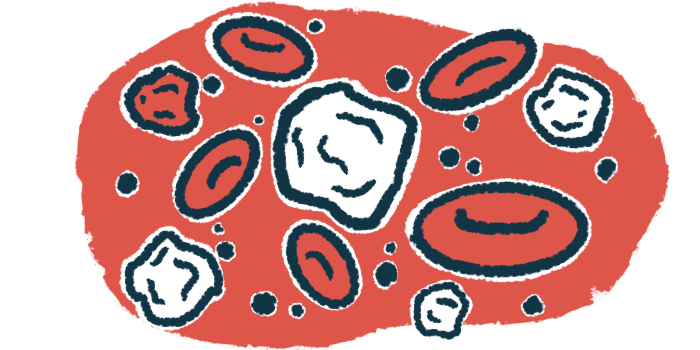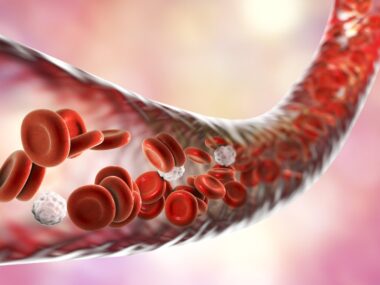AAV types found to have distinct but overlapping immune pathways
Study findings shed light on impacts of PR3-AAV, MPO-AAV in patients
Written by |

Note: This story was updated on Aug. 6, 2025, to correct that proteinase 3 (PR3) and myeloperoxidase (MPO) are the enzymes targeted by AAV-causing antibodies.
People with anti-neutrophil cytoplasmic autoantibody (ANCA)-associated vasculitis have elevated levels of certain immune-related proteins in their blood, a new study from Sweden reports. However, different types of AAV involve different immune pathways, depending on the specific enzyme that’s targeted by AAV-causing antibodies: proteinase 3 (PR3) or myeloperoxidase (MPO).
“The identification of distinct signaling profiles in PR3-AAV and MPO-AAV provides a basis for future studies aiming to improve prognosis prediction and precision treatment strategies in AAV,” the researchers wrote.
The team discovered that while many immune signals are shared across AAV types, each form also has unique biological features. These differences may help explain how the disease behaves in different people, and could lead to more targeted and less toxic treatments, as well as better biomarkers to track disease activity, the researchers noted.
By comparing patients with AAV to those without autoimmune conditions, the team confirmed that immune system overactivation is a hallmark of the disease, but also highlighted important subtype-specific patterns that could offer new clues into how AAV disrupts normal bodily functions.
The study, “The plasma proteome reveals distinct signaling pathways associated with PR3-ANCA positive and MPO-ANCA positive vasculitis,” was published in the journal Medical Reports.
In AAV, self-reactive antibodies called ANCAs mistakenly target proteins within white blood cells, especially neutrophils. This leads to abnormal activation of the immune system, causing inflammation and damage to small blood vessels throughout the body. The symptoms people with the condition experience vary depending on which organs are affected.
AAV types can be classified by the specific protein targeted
AAV can be classified in several ways, including by the specific protein that ANCAs target — most often PR3 or MPO. PR3-AAV tends to affect the respiratory tract more often, while MPO-AAV more commonly involves the kidneys.
Most of the approved treatments available for AAV suppress the immune system. Although this may ease symptoms, it can also make the body more vulnerable to infections. A more complete understanding of the different AAV types could help tailor therapies to target specific disease-causing processes rather than relying on broader immune suppression, the researchers noted.
To address this knowledge gap, and assess differences in disease types, the team recruited 66 people with AAV: 41 with PR3-AAV and 25 with MPO-AAV. The patients’ mean age was 58, and all were in an active disease state. Renal, or kidney-related, involvement was higher in the MPO-AAV group. PR3-AAV participants tended to have more ear, nose, throat, mucous membrane, and lung involvement.
First, the researchers compared blood samples from participants with AAV and 138 controls without AAV but with similar demographics. The team screened for proteins involved in immune and vascular processes.
“A substantial number of differentially expressed proteins were identified in active inflammatory AAV compared to population controls, including both proteins shared across AAV subtypes and proteins specific to PR3-AAV and MPO-AAV,” the researchers wrote.
A total of 18 proteins were higher in patients with both types of AAV, compared with controls. Meanwhile, 13 were only elevated in individuals with PR3-AAV, and 11 in those with MPO-AAV. Most of the highly enriched proteins were related to general immune system activity, such as inflammation, signaling between immune cells, and the movement of immune cells to sites of infection or damage.
Many of the proteins present at high levels in one or both types of AAV interacted with each other, the researchers noted.
“The observed interconnectivities reflected both direct and indirect functional associations between proteins, involving shared signaling pathways or related biological processes,” the team wrote.
Different immune pathways important in PR3-AAV, MPO-AAV
Different specific immune pathways emerged as important in different disease subtypes. For PR3-AAV, proteins in a signaling pathway called STAT3, which helps regulate several immune processes, were present at particularly high levels. STAT3 dysfunction is associated with several autoimmune diseases. This finding indicates it might also contribute to the biology of PR3-AAV.
For MPO-AAV, a different immune pathway called TNF was more active.
“This signaling pathway plays a fundamental role in immune regulation, including the function and survival of [B- and T-cells],” the researchers wrote.
These pathways could provide AAV type-specific targets for therapies, the team hypothesized. Specifically, MPO-AAV treatments could target TNF, while PR3-AAV treatments might be used for STAT3. Proteins in these pathways might also be useful as molecular markers of disease activity, according to the researchers.
In a longer perspective, these studies will contribute to reduced organ damage and fatalities due to inflammation or therapeutic adverse effects and improved quality of life for patients with AAV.
In a final analysis, the scientists compared protein levels in both types of AAV to those in people with two other autoimmune diseases: systemic lupus erythematosus (SLE) and rheumatoid arthritis (RA). Although each condition had some unique immune protein patterns, there also was significant overlap. Protein profiles in PR3-AAV were more similar to those seen in RA, while MPO-AAV more closely resembled SLE, the data showed
The researchers noted that about half of the participants in each AAV group had been treated with glucocorticoids, a type of anti-inflammatory medication, prior to providing blood samples, which may have influenced the results. This, along with the relatively small sample size, were noted as limitations of the study.
Still, the team emphasized that identifying distinct immune signaling patterns in PR3-AAV and MPO-AAV could ultimately lead to new treatment strategies.
“In a longer perspective, these studies will contribute to reduced organ damage and fatalities due to inflammation or therapeutic adverse effects and improved quality of life for patients with AAV,” the researchers concluded.







